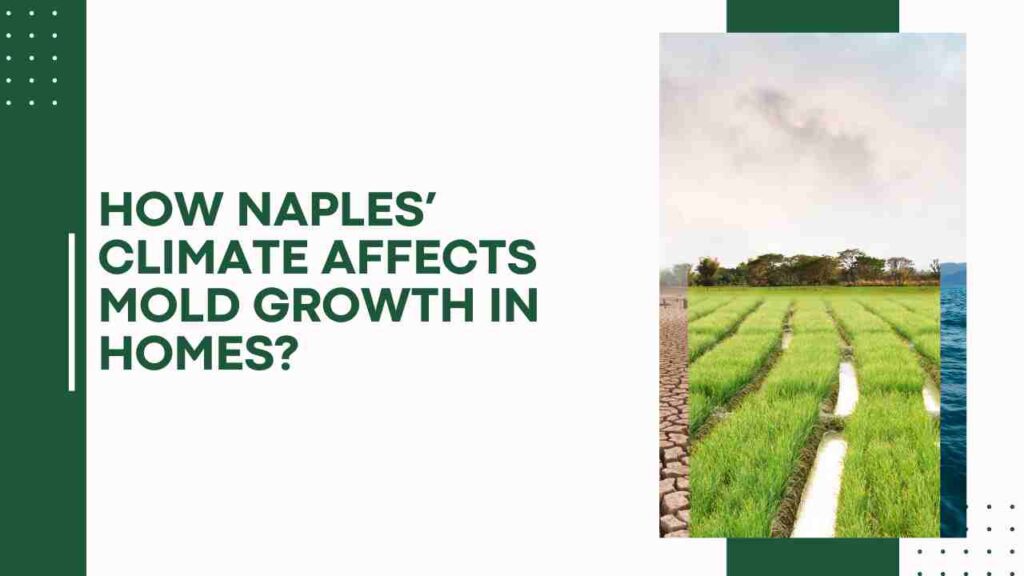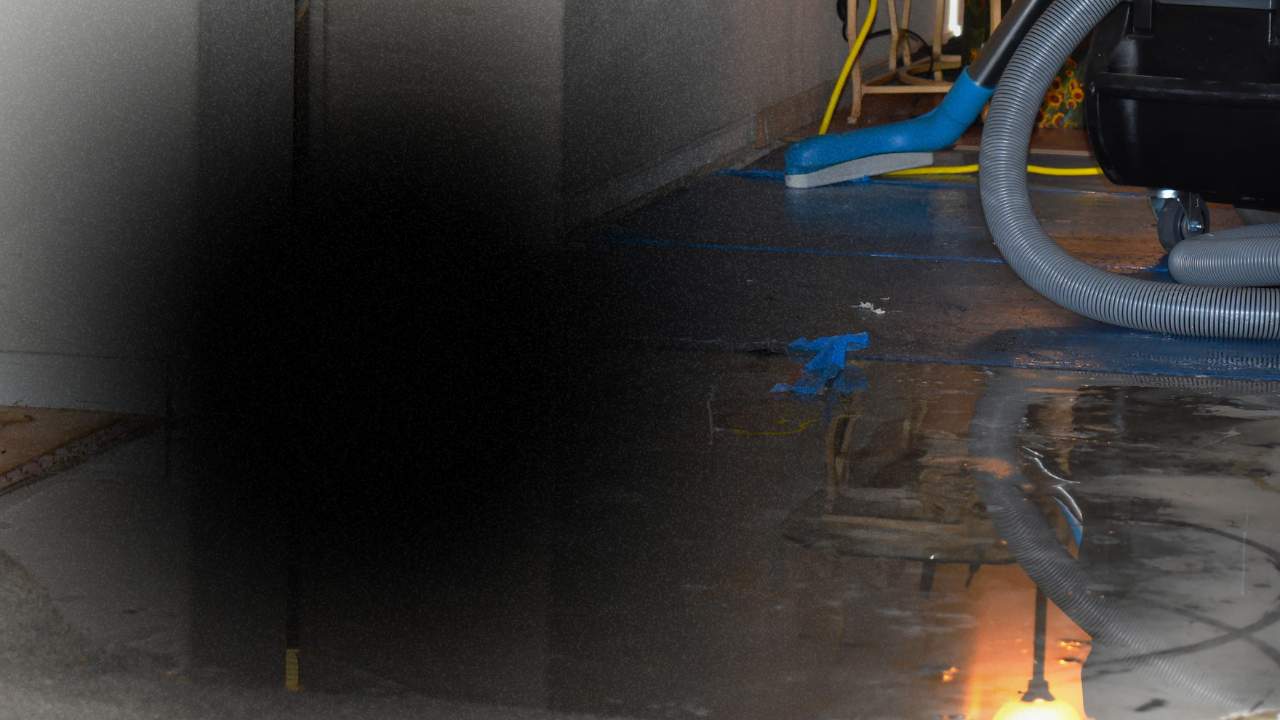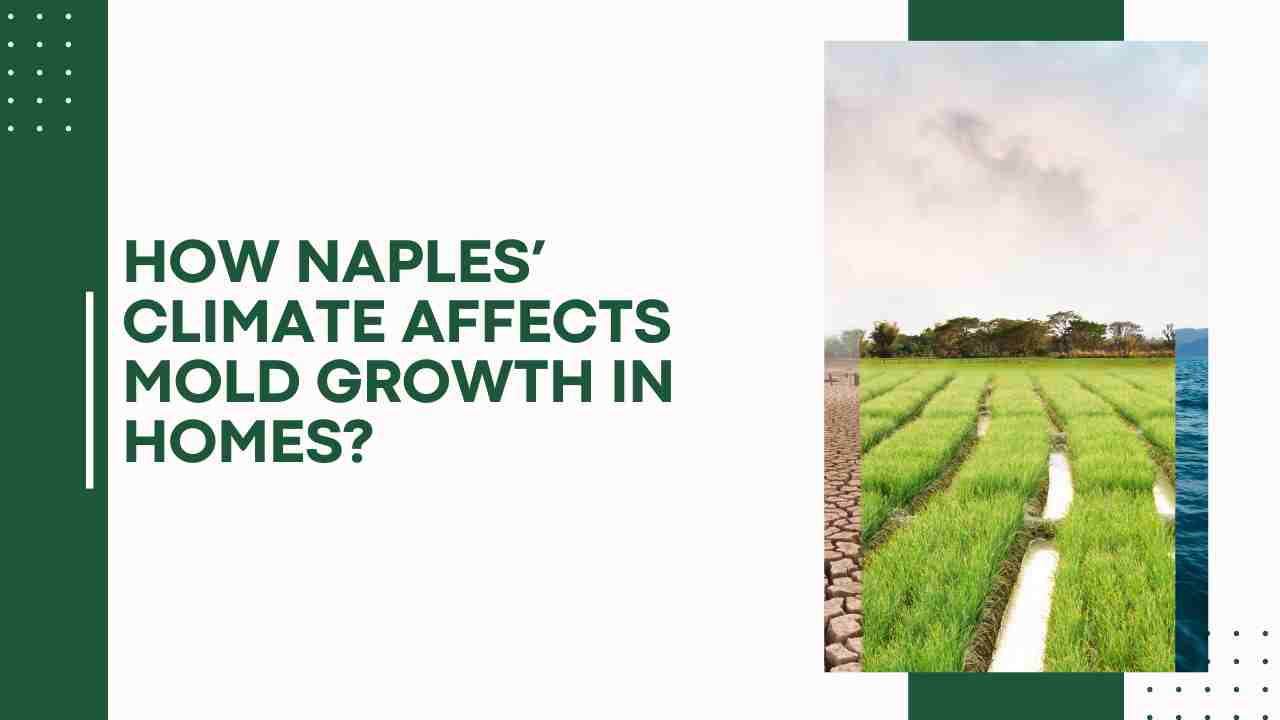Naples, Florida, is renowned for its beautiful beaches, luxurious lifestyle, and vibrant community. However, the city’s unique climate presents a challenge for homeowners mold growth. Understanding how Naples’ climate affects mold growth in homes is crucial for maintaining a healthy living environment and protecting your property investment.
NAPLES WEATHER
The Naples Climate: A Perfect Storm for Mold
Naples experiences a subtropical climate characterized by hot, humid summers and mild, dry winters. This combination of warmth and moisture creates an ideal environment for mold to thrive. Let’s break down the key climate factors that contribute to mold growth in Naples homes:
- High Humidity Levels
Naples’ average annual humidity hovers around 75%, with levels often exceeding 90% during summer months. Mold thrives in environments with relative humidity above 60%, making Naples a prime location for fungal growth.
- Abundant Rainfall
With an average annual rainfall of about 54 inches, Naples receives significantly more precipitation than the national average. This frequent moisture can lead to water intrusion in homes, creating damp conditions that mold loves.
- Warm Temperatures Year-Round
Naples boasts an average annual temperature of 75°F (24°C), with summer highs often reaching the 90s. Mold grows best in temperatures between 77°F and 86°F (25°C to 30°C), which means Naples provides an almost year-round growing season for mold.
- Tropical Storms and Hurricanes
The risk of severe weather events, including tropical storms and hurricanes, adds another layer of complexity to Naples’ mold problem. These events can cause water damage and flooding, creating perfect conditions for mold growth if not addressed promptly.
Common Mold Types in Naples Homes
Given the climate conditions, several mold species are particularly prevalent in Naples homes:
- Aspergillus: A common indoor mold that can cause respiratory issues.
- Penicillium: Often found in damp areas and can spread quickly.
- Stachybotrys (Black Mold): Thrives in very wet conditions and can be particularly harmful to health.
- Cladosporium: Grows well in both warm and cool environments, often found on fabrics and wood surfaces.
How Naples’ Climate Promotes Mold Growth Indoors?
The city’s climate doesn’t just affect the outdoors; it significantly impacts indoor environments as well. Here’s how:
- Condensation Issues
When warm, humid outdoor air meets cooler indoor surfaces (like air-conditioned walls or windows), condensation occurs. This moisture can accumulate and create ideal conditions for mold growth.
- HVAC Challenges
Air conditioning systems work overtime in Naples’ climate. If not properly maintained, they can become breeding grounds for mold, spreading spores throughout the home.
- Indoor-Outdoor Air Exchange
Frequent opening of doors and windows for ventilation can introduce humid air and mold spores from outside, exacerbating indoor mold issues.
- Moisture Retention in Building Materials
Naples’ humid climate can cause building materials like drywall, wood, and carpets to retain moisture, providing a food source for mold.
Preventing Mold Growth in Naples Homes
While Naples’ climate presents challenges, there are effective strategies to prevent mold growth:
- Control Indoor Humidity
Use dehumidifiers to maintain indoor relative humidity below 60%. Consider installing a whole-house dehumidification system for optimal control.
- Proper Ventilation
Ensure bathrooms, kitchens, and laundry rooms are well-ventilated. Use exhaust fans to remove moisture-laden air.
- Regular HVAC Maintenance
Schedule regular maintenance for your air conditioning system to prevent mold growth and ensure efficient humidity control.
- Address Water Intrusion Promptly
Fix leaks, clean gutters, and ensure proper drainage around your home’s foundation to prevent water intrusion.
- Use Mold-Resistant Products
When renovating or building, opt for mold-resistant drywall, paints, and other building materials designed for humid climates.
- Monitor Problem Areas
Regularly inspect areas prone to moisture, such as basements, crawl spaces, and attics, for signs of mold growth.
- Proper Landscape Grading
Ensure your yard is graded to direct water away from your home’s foundation to prevent moisture accumulation.
Detecting Mold in Your Naples Home
Early detection is key to preventing extensive mold damage. Be alert to:
- Visible mold growth (often appearing as black, green, or white spots)
- Musty odors
- Increased allergy symptoms or respiratory issues
- Water stains or discoloration on walls, ceilings, or floors
- Peeling wallpaper or paint
When to Seek Professional Help?
If you suspect a significant mold problem in your Naples home, it’s best to consult with a professional mold remediation service. These experts can:
- Conduct thorough mold inspections
- Perform accurate mold testing
- Implement effective mold removal strategies
- Provide guidance on preventing future mold growth
Living in Naples doesn’t mean you have to live with mold. By understanding how the local climate affects mold growth and taking proactive measures, you can maintain a healthy, mold-free home. Regular maintenance, vigilance, and prompt action when issues arise are key to enjoying all that Naples has to offer without the worry of mold infestations.
Remember, a mold-free home is not just about maintaining your property value; it’s about ensuring a healthy living environment for you and your family. By staying informed and proactive, you can successfully navigate the challenges posed by Naples’ climate and keep your home safe, clean, and mold-free.


